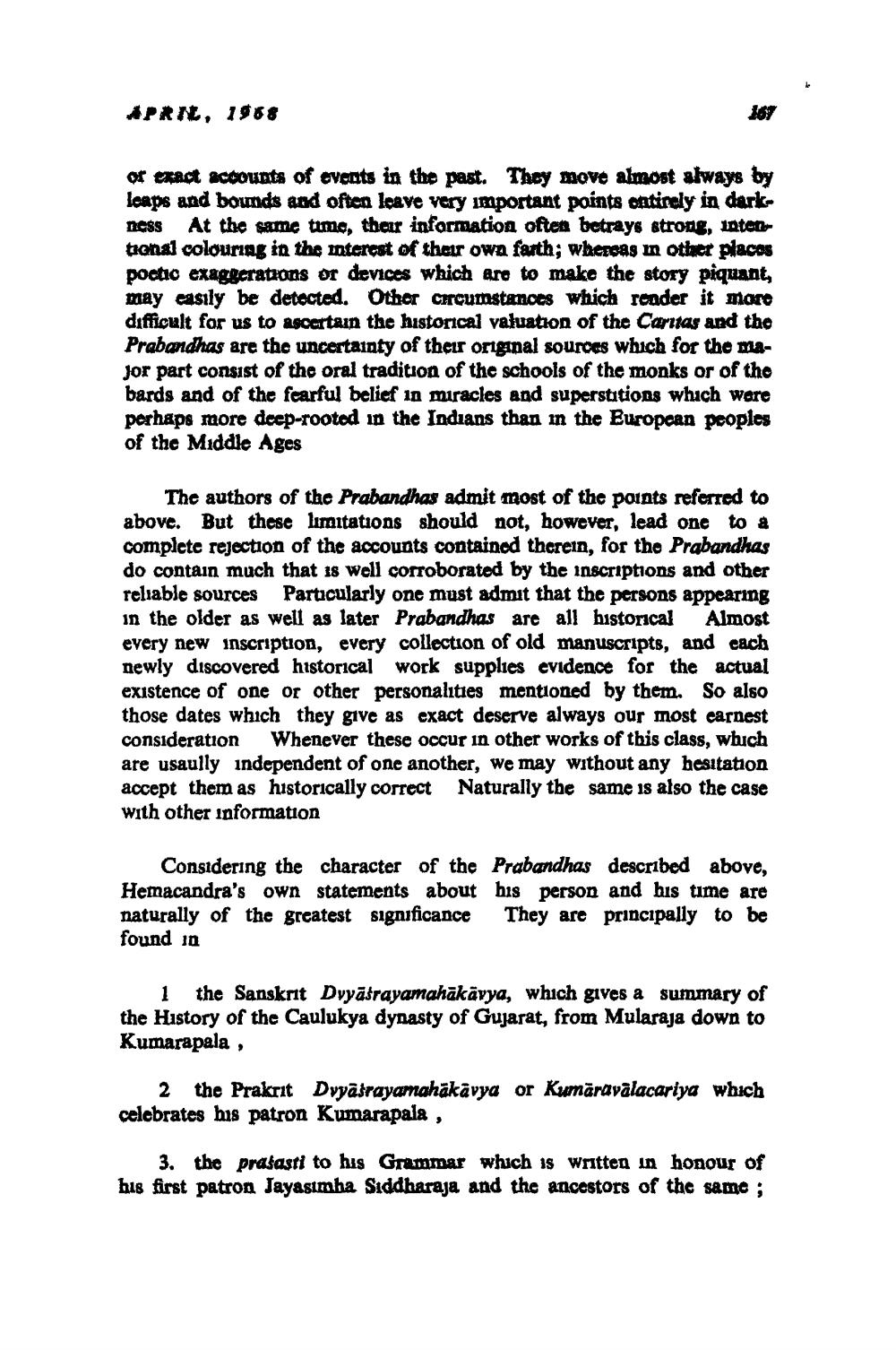________________
APRIL, 1968
167
or exact accounts of events in the past. They move almost always by leaps and bounds and often leave very important points entirely in darkness At the same time, their information often betrays strong, intentional colouring in the interest of their own farth; whereas in other places poetic exaggerations or devices which are to make the story piquant, may easily be detected. Other circumstances which render it more difficult for us to ascertain the historical valuation of the Caritas and the Prabandhas are the uncertainty of their original sources which for the major part consist of the oral tradition of the schools of the monks or of the bards and of the fearful belief in miracles and superstitions which were perhaps more deep-rooted in the Indians than in the European peoples of the Middle Ages
The authors of the Prabandhas admit most of the points referred to above. But these limitations should not, however, lead one to a complete rejection of the accounts contained therein, for the Prabandhas do contain much that is well corroborated by the inscriptions and other reliable sources Particularly one must admit that the persons appearing in the older as well as later Prabandhas are all historical Almost every new inscription, every collection of old manuscripts, and each newly discovered historical work supplies evidence for the actual existence of one or other personalities mentioned by them. So also those dates which they give as exact deserve always our most earnest consideration Whenever these occur in other works of this class, which are usaully independent of one another, we may without any hesitation accept them as historically correct Naturally the same is also the case with other information
Considering the character of the Prabandhas described above, Hemacandra's own statements about his person and his time are naturally of the greatest significance They are principally to be found in
1 the Sanskrit Dvyāśrayamahākävya, which gives a summary of the History of the Caulukya dynasty of Gujarat, from Mularaja down to Kumarapala,
2 the Prakrit Dvyāšrayamahākāvya or Kumāravālacariya which celebrates his patron Kumarapala,
3. the prasasti to his Grammar which is written in honour of his first patron Jayasimha Siddharaja and the ancestors of the same;




